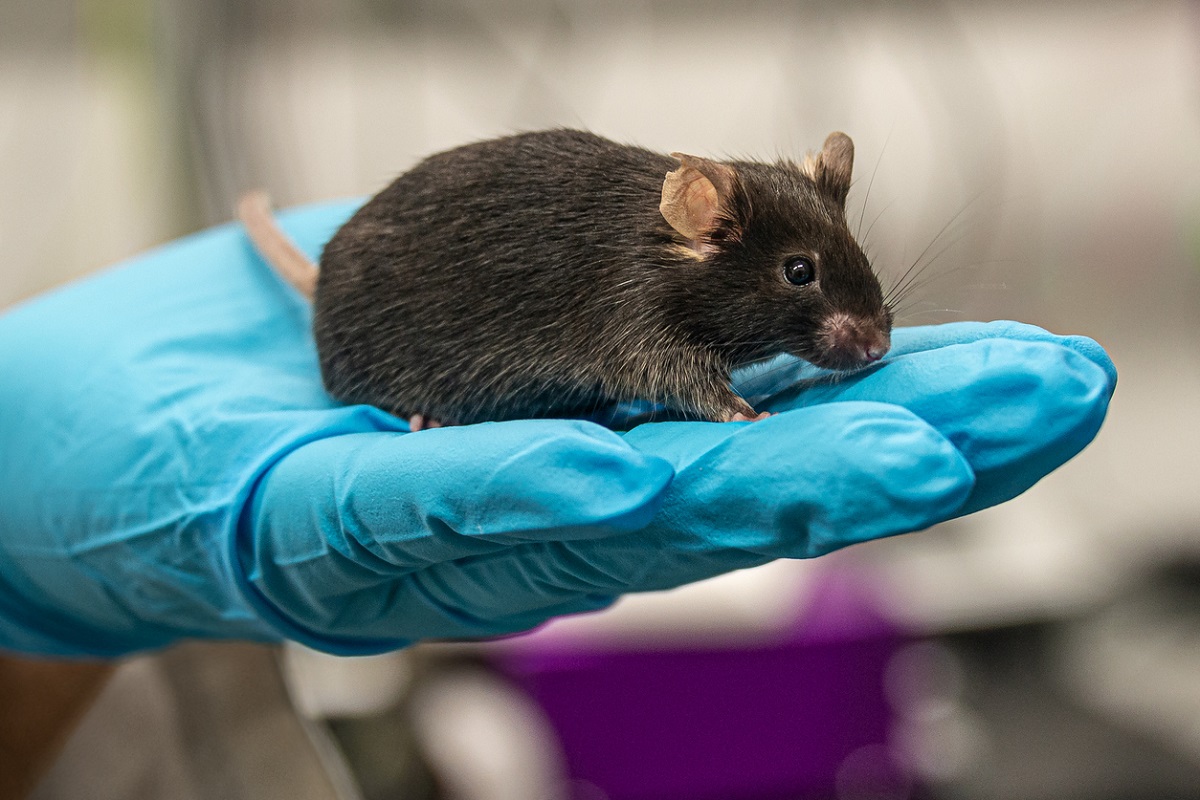
Chromosome Engineering Now Possible in Mammals
September 21, 2022| |
Previous attempts in chromosome engineering were only successful in yeast, but scientists in China were able to produce the first sustainable engineered karyotype on laboratory mice which now carries two chromosomes fused together.
To achieve this, the scientists fused the two largest mouse chromosomes, labeled chromosomes 1 and 2, and two medium-size chromosomes, labeled chromosomes 4 and 5, using haploid embryonic stem cells and gene editing to program the chromosome ligation in mice and create new karyotypes. In the process, the scientists noted the difficulty in deriving stem cells from unfertilized mouse embryos since the cells only contain one set of chromosomes. But through the concept of genomic imprinting, they figured out that by deleting three naturally imprinted regions, a stable, sperm-like imprinting pattern in cells can be established. This allowed them to fuse chromosomes 4 and 5 head to tail with chromosomes 1 and 2 and create karyotypes in three different arrangements without significantly affecting chromatin conformation and sent cell differentiation. Further testing led to karyotypes carrying fused chromosomes 1 and 2, which resulted in arrested mitosis, polyploidization, and embryonic lethality. On the other hand, a smaller fused chromosome composed of chromosomes 4 and 5 was able to be passed on to homozygous offspring.
This feat allowed a better understanding of how misaligned or malformed chromosomes can be corrected through chromosome engineering in mammals. It also demonstrated that the chromosomal rearrangement event is the basis for species evolution and its importance to reproductive isolation. These findings can unlock possibilities for large-scale DNA engineering in mammals.
More details can be found in Science and EurekAlert!
| |
You might also like:
- Founder of Chromosome Genomics Expresses Support for GM to Achieve Food Security
- Gene Editing Produces Livestock ‘Surrogate Sires' Successfully Made Fertile
- Scientists Turn to Gene Editing to Manage Invasive Species
Biotech Updates is a weekly newsletter of ISAAA, a not-for-profit organization. It is distributed for free to over 22,000 subscribers worldwide to inform them about the key developments in biosciences, especially in biotechnology. Your support will help us in our mission to feed the world with knowledge. You can help by donating as little as $10.
-
See more articles:
-
Gene Editing Supplement (September 21, 2022)
-
Research and Tools
- KIT Researchers Use CRISPR to Prevent Genetic Exchange
- CRISPR Boosts Production of Medical Compound in Chicory
- Chromosome Engineering Now Possible in Mammals
- All-in-one Plasmid CRISPR-Cas9 System Allows Rapid Genome Editing of B. subtilis
-
Policy Considerations and Approvals
- EU Agriculture Ministers Agree on Plant Breeding Innovation to Strengthen Food Security and Sustainability in the Region
-
Public Acceptance and Engagement
- Textbook-style CRISPRpedia Now Available
-
Read the latest: - Biotech Updates (December 17, 2025)
- Gene Editing Supplement (December 17, 2025)
- Gene Drive Supplement (February 22, 2023)
-
Subscribe to BU: - Share
- Tweet

